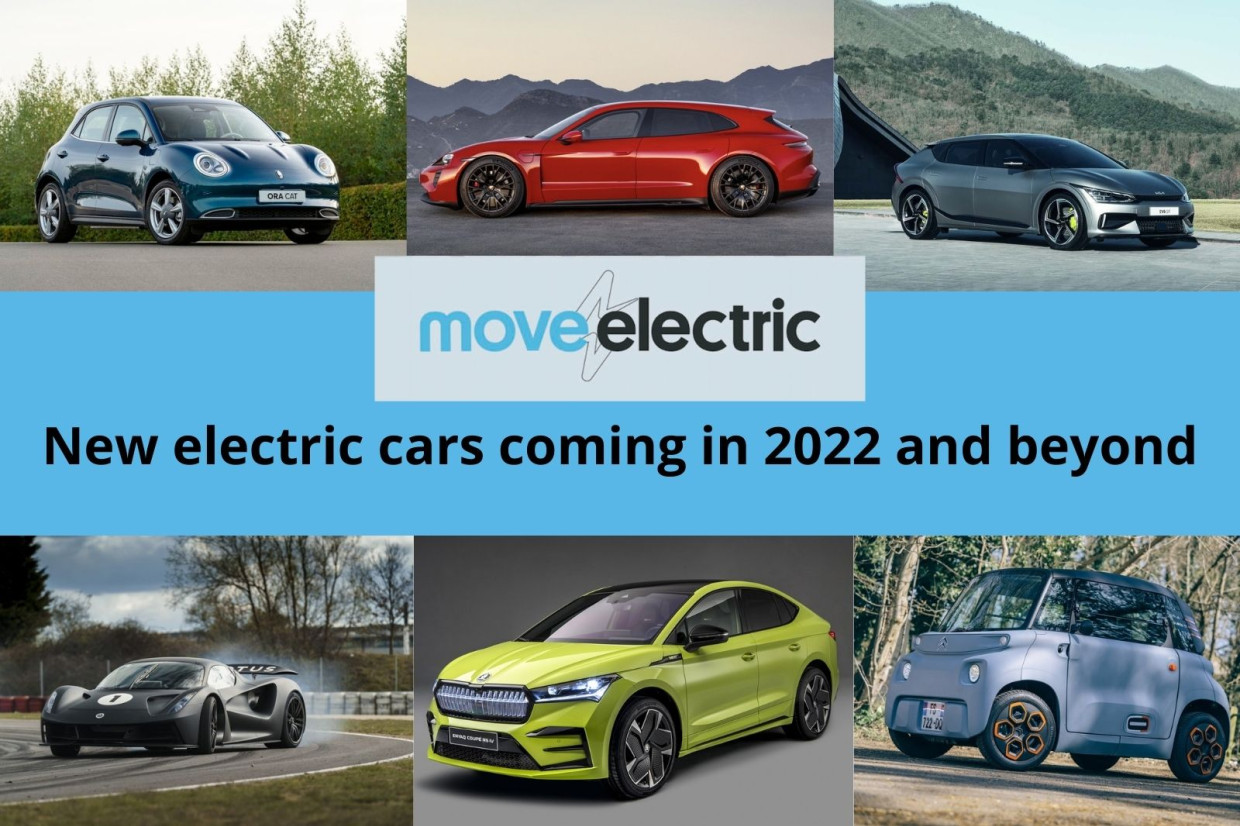
Electric cars are the future – and the future is already here. In the last few years the number of EVs you’ll find in UK showrooms has grown dramatically, and that’s only going to increase as we edge closer to a full switch to zero-emission machines in 2035.
Frankly, it’s hard to keep up with the sheer volume of electric cars on their way, so we’ve done all the hard work for you. Here’s are guide to pretty much every electric cars on its way in 2022 – and beyond.
The due dates given here are either the official word or our best estimate given what we know (which predictably means dates here are subject to change).
We’ll be updating this list regularly, so keep tabs here to find out what’s new. And keep checking our electric cars section for the latest news and reviews. You can also subscribe to our regular newsletter here.
Audi E-Tron
Due: November 2022
Audi’s first dedicated electric SUV will have a substantial facelift this year – but it won’t just be getting a style makeover. Audi will cram a huge new battery into the machine, and while we’re yet to receive firm details it’s understood it will be enough to lift the e-tron’s range from 249 to 373 miles. Read our review of the current Audi e-tron here.
Audi Q6 e-tron
Due: 2023
Don’t let the unassuming model name of this forthcoming SUV fool you: the Q6 e-tron is a hugely significant car for Audi, and a big leap. It will be the first Audi model built on an advanced new electric car platform the firm has co-developed with Porsche. It will feature an 800V architecture to allow for high-speed charging, and a range of more than 300 miles. Expect an all-wheel-drive dual motor set-up to be offered, and a high performance RS version to follow.
BMW iX M60
Due: April
BMW’s M performance division has got its hands on the big, brash and hugely sophisticated iX SUV, and massively ramped up the power to 611bhp. Frankly, the top-spec iX was already pretty mighty, but we must admit we’re intrigued to find out what a 0-62mph time of 4.0 seconds feels like in a big SUV. It has a substantial 357-mile range, and an equally substantial £111,905 price tag. Read our BMW iX review here.
BMW iX1
Due: November
The electric version of BMW X1 small SUV will effectively replace the quickly i3 as the entry point of the firm’s electric line-up. Undoubtedly, the iX1 won’t be as bold or distinctive as the car it’s replacing, but given the popularity of premium crossovers it should be a tempting and popular proposition.
BMW i7
Due: December
The BMW i7 will be a large executive saloon that rivals the Mercedes-Benz EQS, and will be designed to appeal both as a car to drive and a car to be driven in. It will be launched alongside a combustion-engined 7 Series, but shouldn’t compromise much on its EV form: expect a 105kWh battery to allow for around 400 miles of luxury wafting.
![]()
Citroën Ami
Due: April
The quirky Citroën Ami isn’t really a car at all: it’s classified as a quadricycle, and is designed to offer affordable green mobility. As a two-seater with a top speed of just 28mph and a 5.5kWh battery it certainly has its limitations – but it’s as much a four-wheeled rival to electric mopeds and e-bikes in offering an urban alternative to a full-size car.
It’s certainly popular: Citroën didn’t actually plan to sell the Ami in the UK, but decided to do so after an internet campaign. That does explain while it will be left-hand-drive only, mind. Click here to read our full Citroën Ami review.
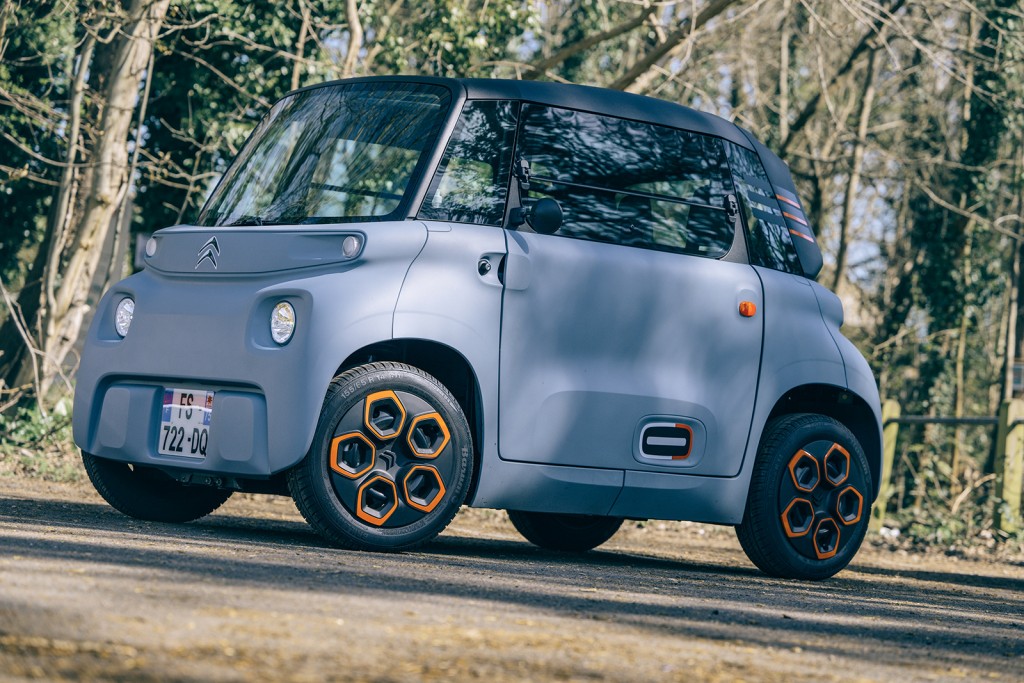
Cupra Born
Due: March
Cupra – that’s Seat’s upmarket sister brand – will enter the electric hatchback wars with its version of the Volkswagen ID 3. While similar in dimensions to its VW Group sister model, the Born will be given a sporty focus, and will launch with a 58kWh battery, with 45kWh and 77kWh variants coming later. A 231bhp performance variant will also arrive later this year. Read our full Cupra Born review here.
Cupra Tavascan
Due: 2024
The second electric Cupra to use the VW Group’s MEB electric platform, the Tavascan will be a dramatically styled SUV broadly similar in size to the Volkswagen ID 4. The distinctive design will remain true to the concept that was first shown. Expect a choice of single- and twin-motor versions, and a performance variant.
Cupra UrbanRebel
Due: 2025
The UrbanRebel concept was shown as a motorsport hot hatch at the 2021 Munich motor show, and much of its styling will be used for Cupra’s forthcoming entry level crossover. It will use a special small car version of the MEB electric platform, which will also be the basis for forthcoming Skoda and Volkswagen models.
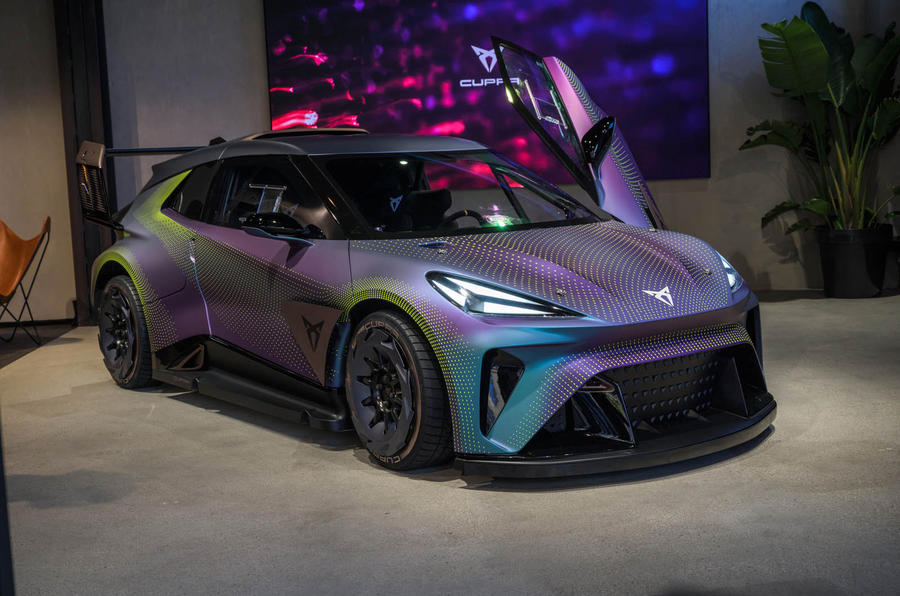
Dacia Spring EV
Due: June
Group Renault’s budget brand Dacia has achieved great success with the no-nonsense Sandero and Duster, and it’s first electric car follows the same philosophy. The Spring EV is a four-seater with a 44bhp electric motor, 140 miles of range and basic but perfectly decent kit. One note of caution: the machine was only given a one-star rating in Euro NCAP safety testing. The Spring EV isn’t yet officially confirmed for the UK, but we understand it’s likely to come.
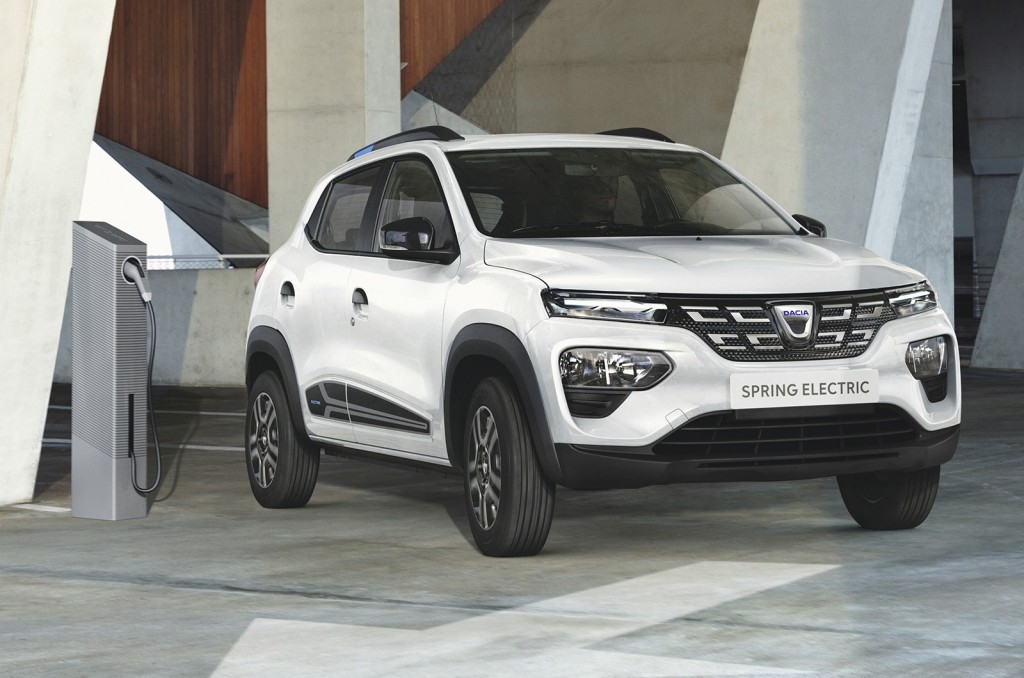
Ford E-Transit
Due: April
Ford styles the Transit as the ‘backbone of Britain’ due to its popularity. The new electric version is designed to offer all the practicality of its predecessor, but adding a cutting-edge electric powertrain perfect for use in urban areas where vans are increasing restricted by clean air zones and congestion charges. Expect your parcels and plumbers to start arriving by zero-emission Transit soon.
Ford electric SUV
Due: 2023
To be clear, ‘electric SUV’ fairly obviously isn’t the name of Ford’s new model: we just don’t know yet what nameplate it will get. Unlike the Mustang Mach-E, this machine won’t be developed solely by the Blue Oval: it’s the first Ford machine to use the VW Group MEB platform as part of a big deal between the firms. It will get a selection of single-motor, rear-drive and dual-motor four-wheel-drive powertrains with a range in the high-200-mile region. The most intriguing question: will it look and feel like a Ford, or just a Volkswagen with a different badge on?
Fisker Ocean
Due: 2023
Never heard of Fisker? It’s an American EV start-up headed by Henrik Fisker. It’s actually Fisker’s second go at launching an EV firm, and while the first failed things look far more promising this time around given some serious partners involved. The Ocean certainly looks promising: it’s a stylish looking SUV that’s set to rival the Audi Q4 e-tron and Tesla Model Y. It will offer a range of more than 250 miles, and a spacious interior. European cars will be built by Magna Steyr in Austria, with prices ranging from £30,000 to £50,000.
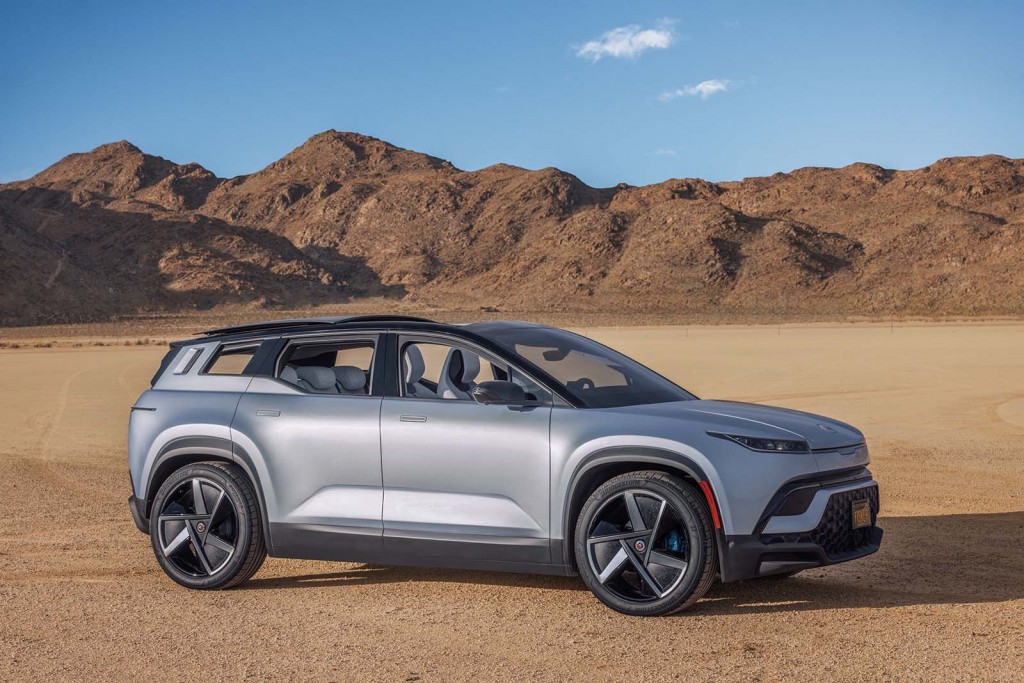
Fisker Pear
Due: 2024
Who names a car after a fruit? American EV firm Fisker, apparently - although the firm says the title in an acroynym for Personal Electric Automotive Revolution. So there. Essentially, the Pear will be a compact electric crossover designed to rival the likes of the revived Renault 5.
Genesis GV60
Due: May
The Genesis GV60 is the new Korean premium brand’s first bespoke electric vehicle, and uses the excellent E-GMP platform developed by parent firm the Hyundai Motor Group. A stylish coupe-SUV, it will be offered in the UK with a choice of three powertrains, and gets a range of stylish, premium features and kit. Our favourite bit? The rotating crystal sphere controller that spins round the reveal the drive selector. We take an up-close look at the GV60 here.

Genesis Electrified GV70
Due: June
As the name might suggest, the Electrified GV70 is a version of Genesis’ large SUV fitted with an electric drivetrain. It will rival the BMW iX3 with a 482bhp motor and 310-mile range.
Hyundai Ioniq 6
Due: June
Hyundai’s second offering on its excellent E-GMP electric platform will be a sweeping saloon that should have the power to challenge a Porsche Taycan. Yes, that’s a Hyundai taking on a Porsche. Times have changed. While part of the same sub-brand, the new machine’s styling will be distinct from the retro-themed Ioniq 5. Expect a 77.4kWh battery, which should give it a decent range, too.
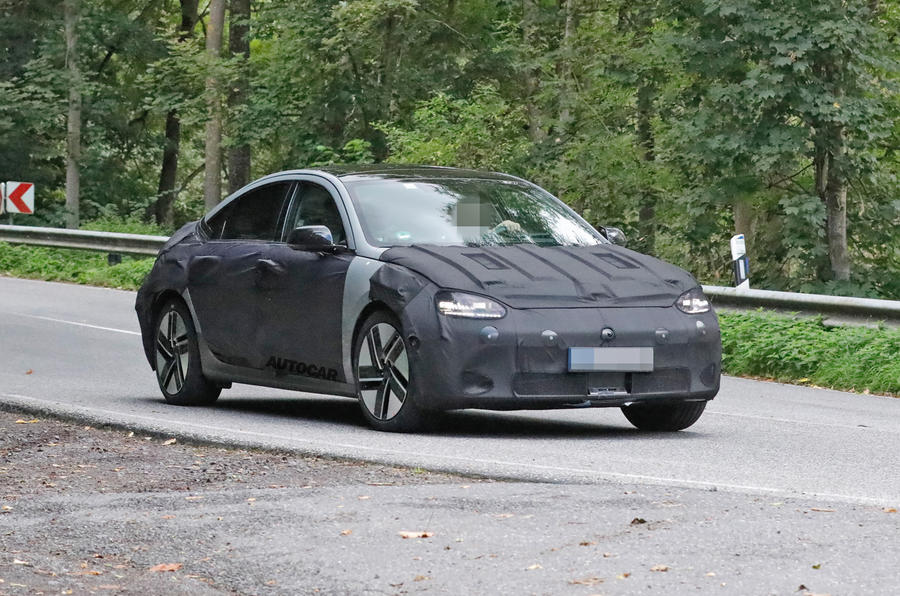
Hyundai Ioniq 5 N
Due: November
N is Hyundai’s performance division, which has produced some truly excellent hardcore versions of its combustion-engined models. They’re far from styling upgrades too: N takes its work seriously, and doesn’t compromise when it comes to its models. It will use a twin motor powertrain offering 600bhp, and expect lots of other tuning and engineering work to make Hyundai’s fastest machine yet a proper performance car. Read our review of the regular Ioniq 5 here.
Hyundai Ioniq 7
Due: 2023
The third bespoke electric model in Hyundai's Ioniq sub-brand will be a large SUV. It's going to be very popular in the USA, but is the sort of car that's becoming increasingly common in the UK. It's part of a bold expansion of Hyundai's electric line-up in the coming years.
Kia EV6 GT
Due: November
Kia’s rapid performance crossover will share much of its underpinnings with the Ioniq 5 N, including that twin motor, 600bhp powertrain. That, incidentally, is more power than a Porsche Taycan 4S has. Given the standard EV6 felt plenty fast enough, we’re intrigued to find out how this version stands out. Read our review of the regular Kia EV6 here.
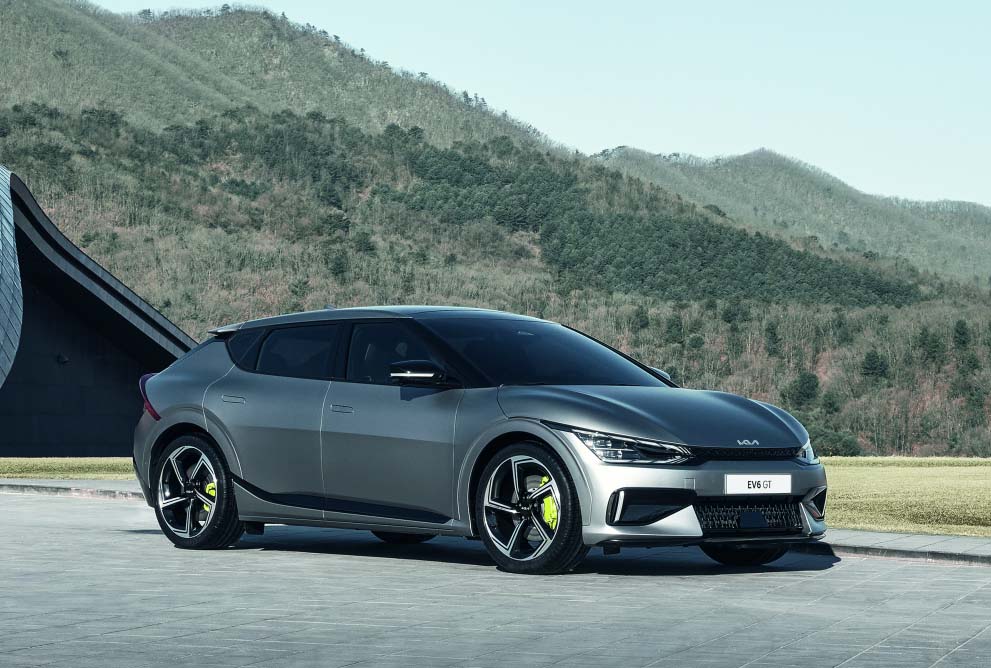
Kia EV9
Due: 2023
The second machine from Kia's pleasingly literal EV range is a large SUV using a stretched version of the E-GMP platform. It's going to be followed by lots more electric Kias, including Purpose Built Vehicles (PBVs), which are basically commercial vehicle and shuttles, and pick-ups.
Lexus RZ
Due: May
We’re waiting to see a production version of the first bespoke electric Lexus, but the firm has confirmed the RZ will feature fully variable four-wheel drive and steer-by-wire technology. It will use the same platform as the forthcoming Toyota bZ4X, and Lexus promises that it will offer an “exhilarating driving performance.”
Lotus Evija
Due: June
The first electric Lotus is something of a statement: it’s 1972bhp, four-motor hypercar with a top speed of 200mph and a range of 250 miles (although very much not if you go at 200mph). It’s effectively a limited-run halo car that will showcase future electric Lotus models.
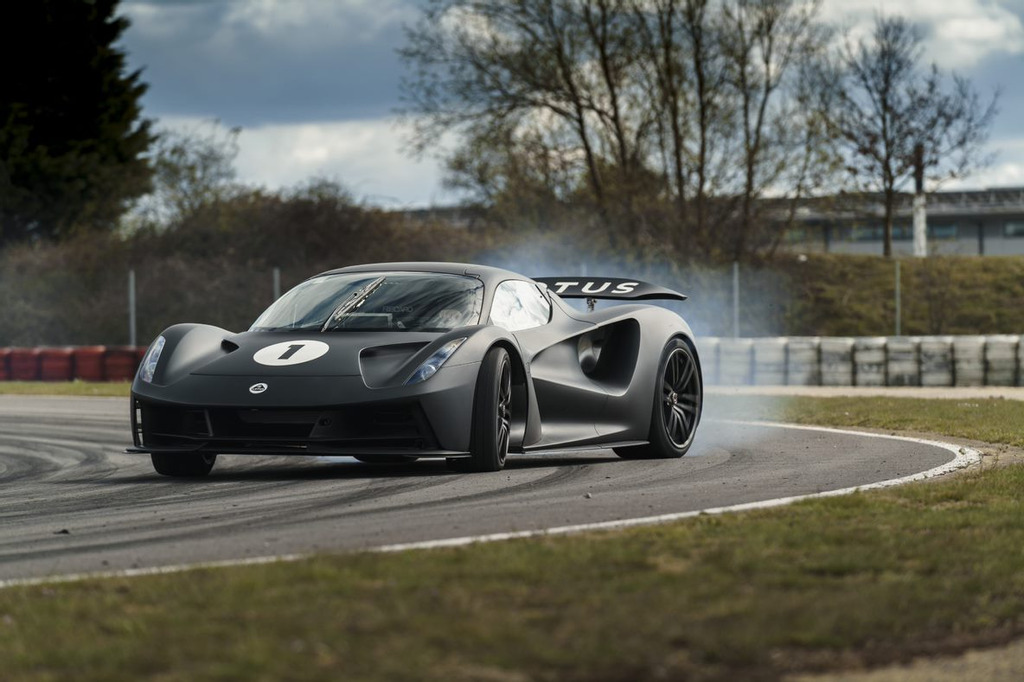
Lotus Type 132
Due: November
This could be the most radical Lotus yet: it’s an electric SUV that will be built in China, rather than the firm’s longtime Hethel base in Norfolk. That said, the firm promises that the Type 132 (that’s a codename, not the final title) will be a ‘true’ Lotus – and we’ll be intrigued to see how it managed that, given Lotus is known for lightweight design and handling. Expect two versions, offering around 600bhp and up yo 750bhp.
Lucid Air
Due: September
There are lots of EV starts-ups described as ‘the next Tesla’ pitching ‘game-changing’ new EVs, so it’s easy to be a bit cynical about Lucid. But… the Lucid Air really could be a game-changer. The firm claims the coupe will have a range of up to 500 miles, along with a powertrain offering up to 1065bhp. Prices in the US start from $52,100 (that’s around £40,040 in the UK), and entry-level cars are driven by a 395bhp electric motor and a 75kWh battery pack for 240 miles of range.
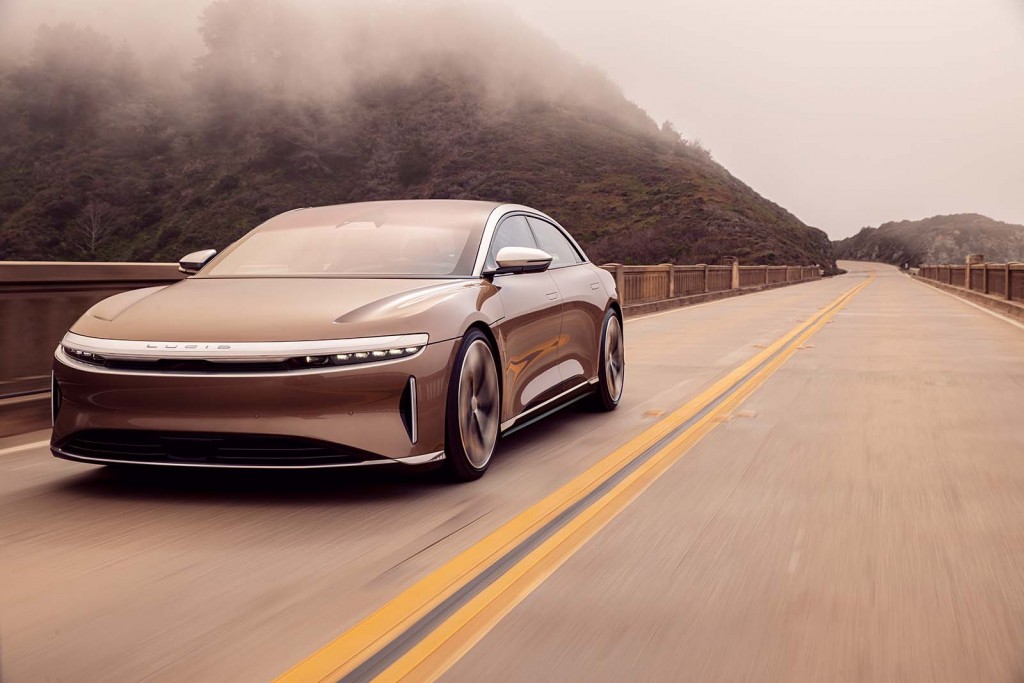
Mercedes-Benz EQE
Due: June
Mercedes’ new CLS-sized saloon has the BMW i4 and Tesla Model 3 in its sights. Using a new dedicated electric platform, the EQE takes styling cues from the larger EQS and will also be offered with the massive ‘hyper screen’ dashboard. The shell is made from 100% recycled steel and Mercedes claims it will offer up to 410 miles between charges.
Mercedes-AMG EQE 43 and 53
Due: late 2022
If the Mercedes-Benz EQE sounds tempting but you want even more power, than can we recommend the two versions being developed by the firm’s AMG performance arm. They’ve both been given extensive powertrain upgrades, along with work on the suspension and other features to boost handling and performance. There are also styling upgrades, although they’re relatively subtle compared to some previous AMG makeovers.
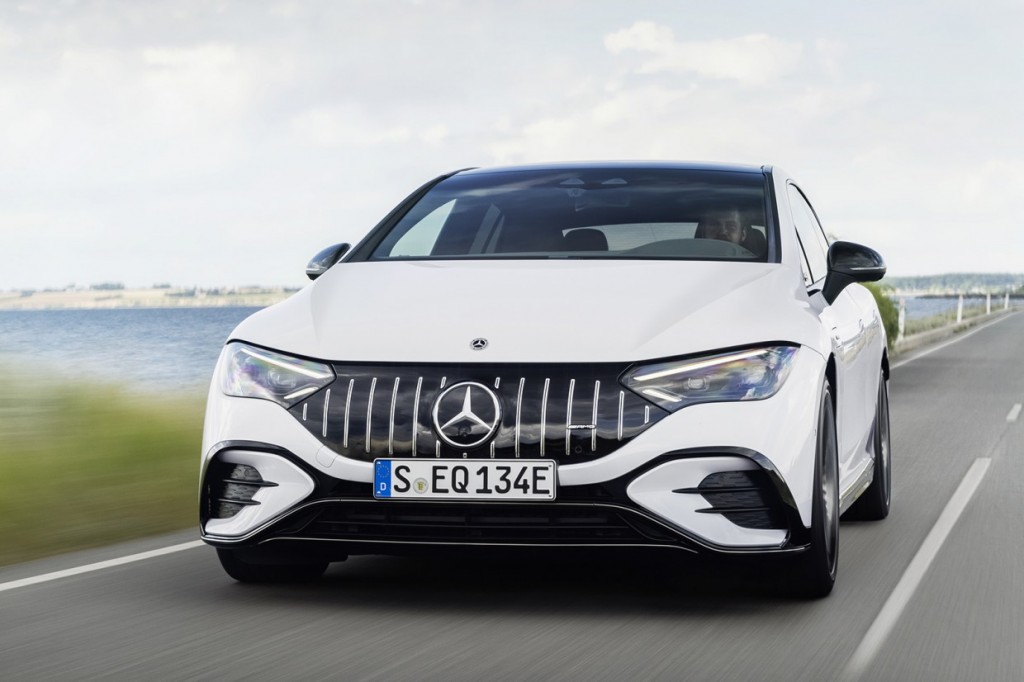
Mercedes-AMG EQS 53
Due: March
The EQS 53 is the first electric performance car to come from Mercedes-Benz’s AMG performance arm. The Porsche Taycan Turbo S rival offers a dual-motor set-up with 751bhp and 752lb ft of torque. That’s more power than the twin-turbocharged 4.0-litre V8 unit from the GT S coupé. Design changes will be minor compared to the standard EQS, but lots of work has gone on underneath the bodywork to boost the handling and performance.
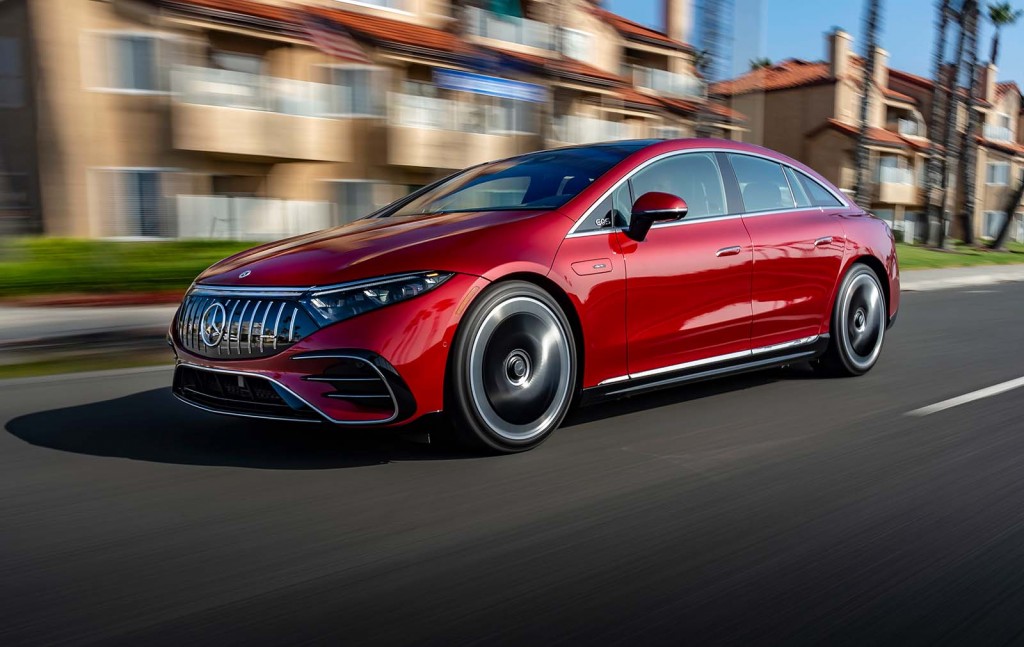
Mercedes-Benz EQT
Due: May
The Mercedes-Benz EQT is a new electric MPV based on a concept developed in partnership with Renault. It will be a passenger version of the electric T-Class van, basically, and is actually really quite stylish for an MPV. It will rival the Volkswagen ID Buzz.
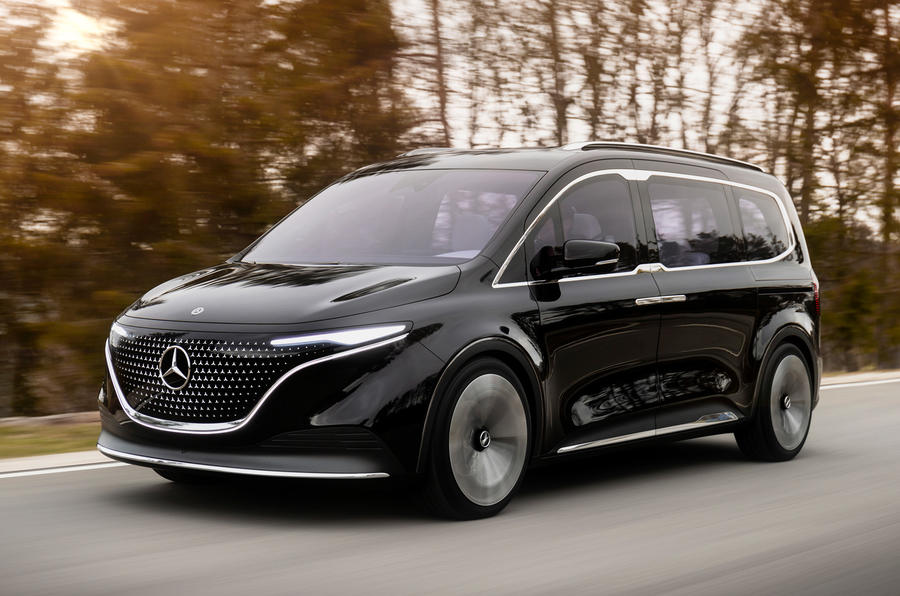
MG hatchback
Due: 2023
Set to be previewed in the coming month, MG will take on the Vauxhall Corsa-e with a small electric hatchback that will join the ZS EV and 5 EV in the budget brand’s burgeoning electric line-up.
Mini Hatch
Due: 2023
The current Mini Electric is basically a converted version of the regular Mini hatch and suffers from the limited range, but don’t expect the next-generation machine three-door hatch to have similar issues. It’s been developed from the start with electric power in mind (although a combustion-engined version will still be offered).
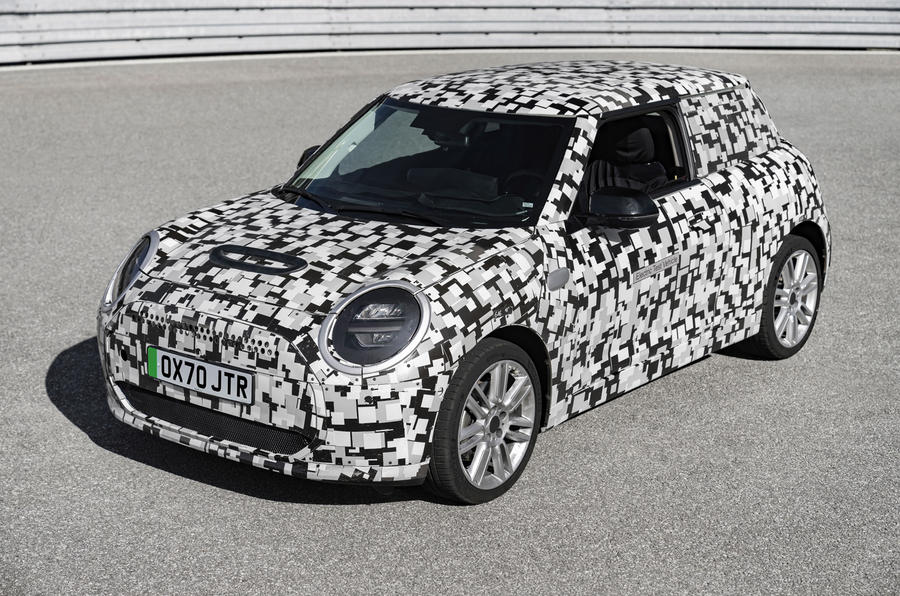
Nissan Ariya
Due: July
Nissan will finally follow up the hugely successful Leaf with its second bespoke EV. The Ariya is a mid-size SUV that will rival the likes of the Volkswagen ID 4 and has been developed alongside the Renault Megane E-Tech. It will be priced from £41,845. Entry-level models will be front wheel drive and feature a 63kWh battery, while the top-rung e-Performance has four-wheel drive, an 87kWh battery and 389bhp.
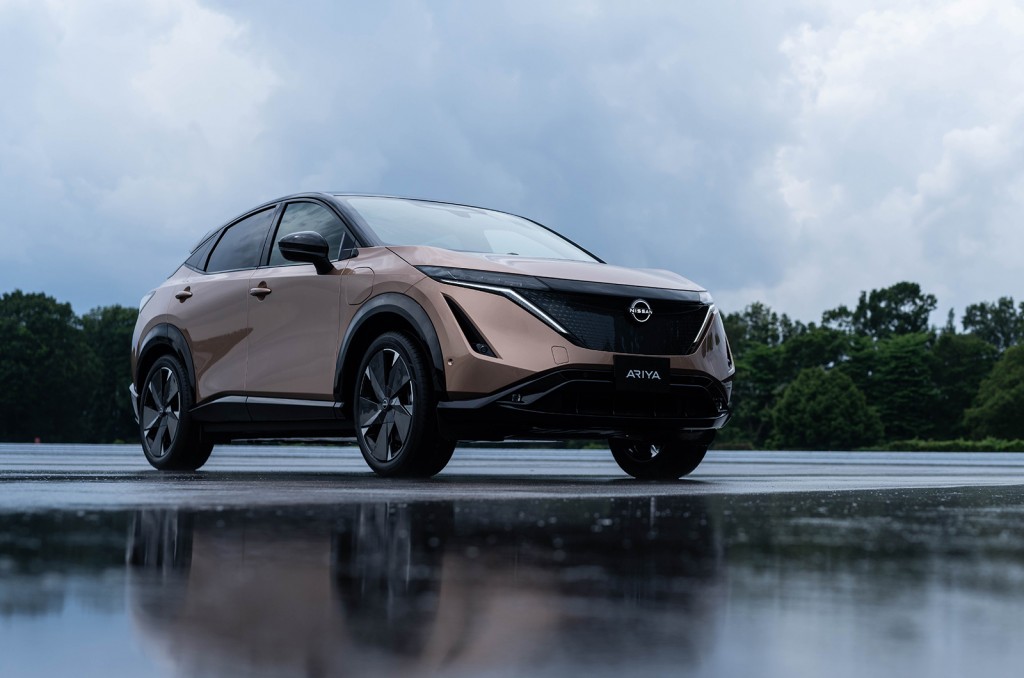
Nissan Micra
Due: 2025
Nissan's long-running small hatchback is returning in electric form. The machine will use the Renault-Nissan-Alliance's CMF-BEV platform, shared with the Renault 5 - and will be built alongside that model as a Renault plant in France.
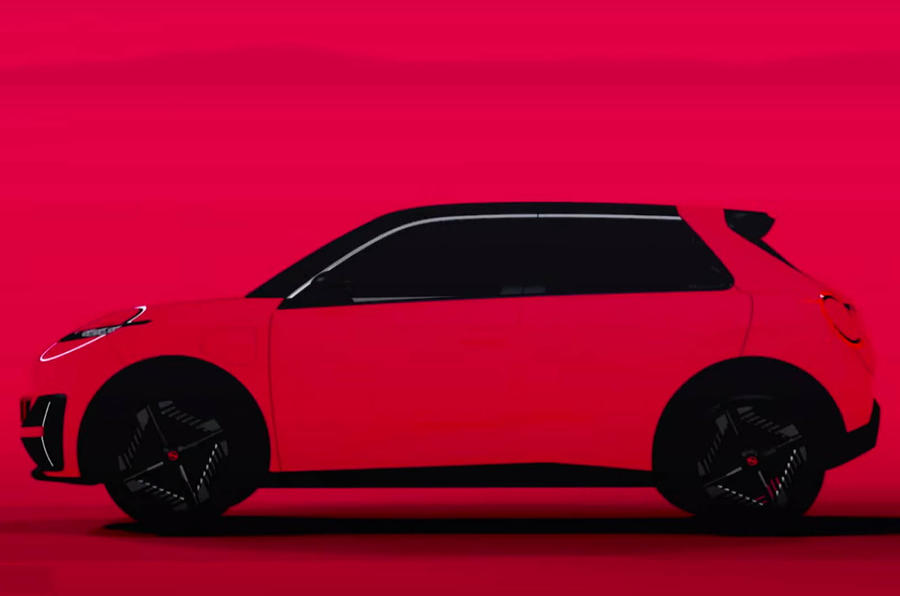
Nissan electric crossover
Due: around 2025
Nissan has plans for 15 global EVs using the CMF-EV platform that underpins the Ariya. We don't know much about them, but it has confirmed one will be an electric crossover built at the firm's Sunderland plant in the UK.
Ora Cat
Due: March
Chinese EV brand Ora will arrive in the UK with the oddly titled Cat, a quirk, retro-styled hatch that has more than a whiff of original Volkswagen Beetle to its design. It’s actually set to rival the new Volkswagen ID 3, with a starting price of around £25,000 and a range of 261-miles. It also promises plenty of tech, including mobile phone-controlled remote functions and over-the-air updates.
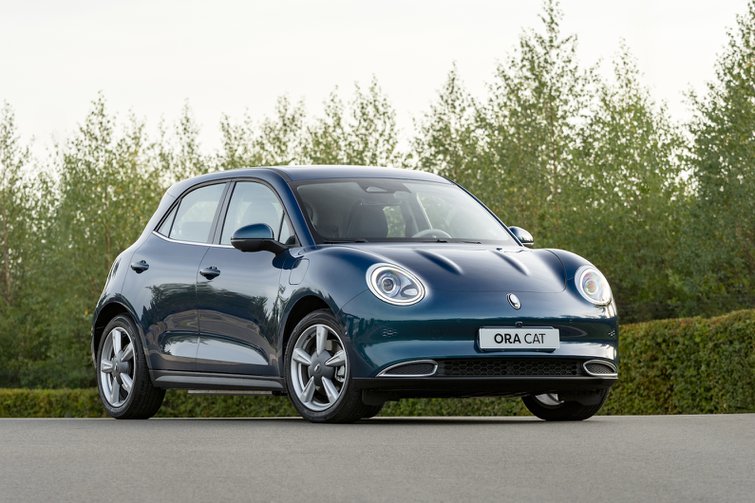
Peugeot e-308
Due: 2023
The Peugeot 308 was unveiled last year in combustion engine and plug-in hybrid form, but we’ll have to wait until next year for the full electric version. The family hatch will use a 50kWh battery powering a front-wheel-mounted motor, making 154bhp and 199lb ft.
Polestar 3
Due: November
Polestar has a pleasingly simple numbering policy: its first two machines were called the 1 and 2, and so its third will be titled the 3. It’s a large SUV that will be similar to the Volvo XC90 successor under development on the same platform, and the firm has promised the advanced new electric architecture will feature a raft of advanced sensors and safety kits. Since it’s Polestar, expect lots of sustainable materials to be used, too.
Polestar 4
Due: 2023
Yes, this will be Polestar’s fourth model. In this case, it’s going to be the firm’s electric Porsche Macan rival, a sporty SUV that will be smaller and more athletic than the Polestar 3.
Polestar 5
Due: 2024
Polestar’s fifth model will move away from the firm’s run of SUVs: this will be an electric GT car based heavily on the previously seen Precept concept. We’re excited already.
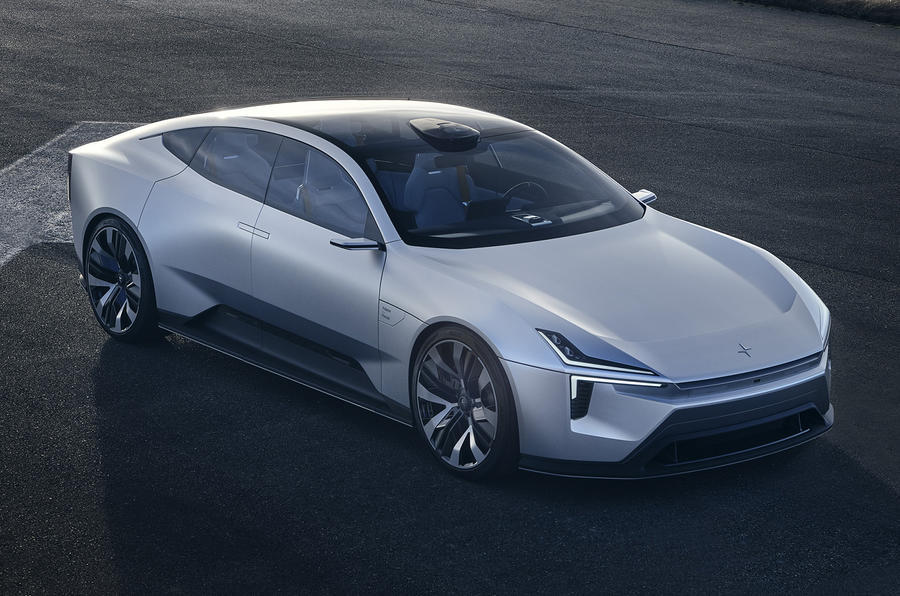
Porsche Taycan GTS
Due: April
Slotting in between the Taycan 4S and Turbo, the new Taycan GTS might just be the pick of the Porsche sports car’s range. A dual motor set-up will offer 590bhp, and a might 626lb ft of torque. Read our review of the Porsche Taycan here.
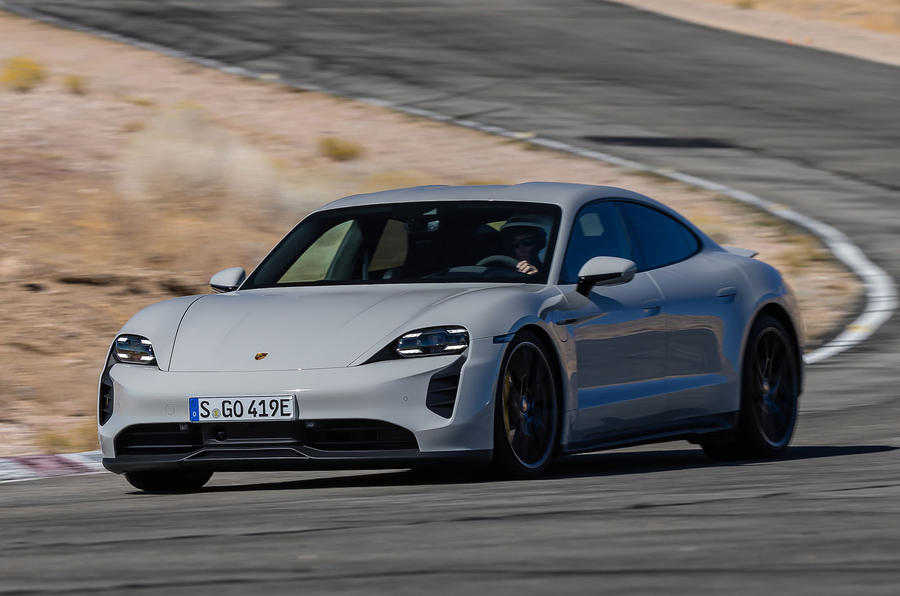
Porsche Taycan Sport Turismo
Due: April
Basically an estate version of the Taycan, the Sport Turismo loses the Taycan’s off-road styling and drops closer to the ground. It will also be offered in GTS form – which means that model will effectively be the Porsche Taycan Sport Turismo Gran Turismo Sport. Read our review of the Porsche Taycan here.
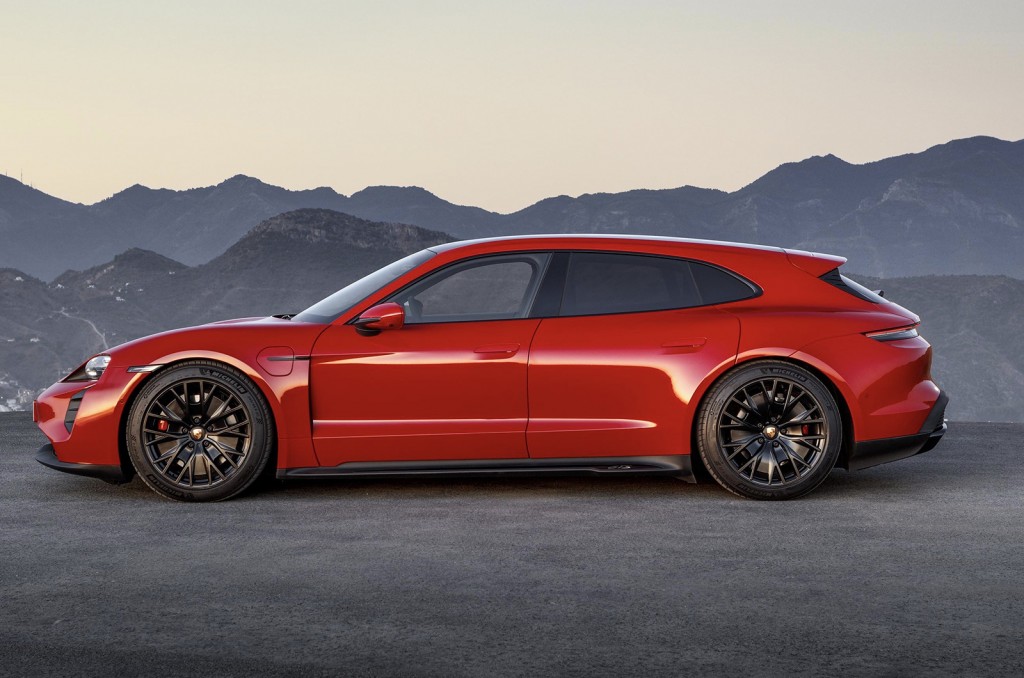
Porsche Macan EV
Due: 2023
The next-generation Macan is going electric. The machine will be Porsche’s second bespoke EV, and given the first was the Taycan we’re quite excited at how good it might be. It will use an entirely new platform co-developed with Audi, and should get a four-wheel-drive, dual-motor set-up offering 700bhp and 750lb ft of torque.
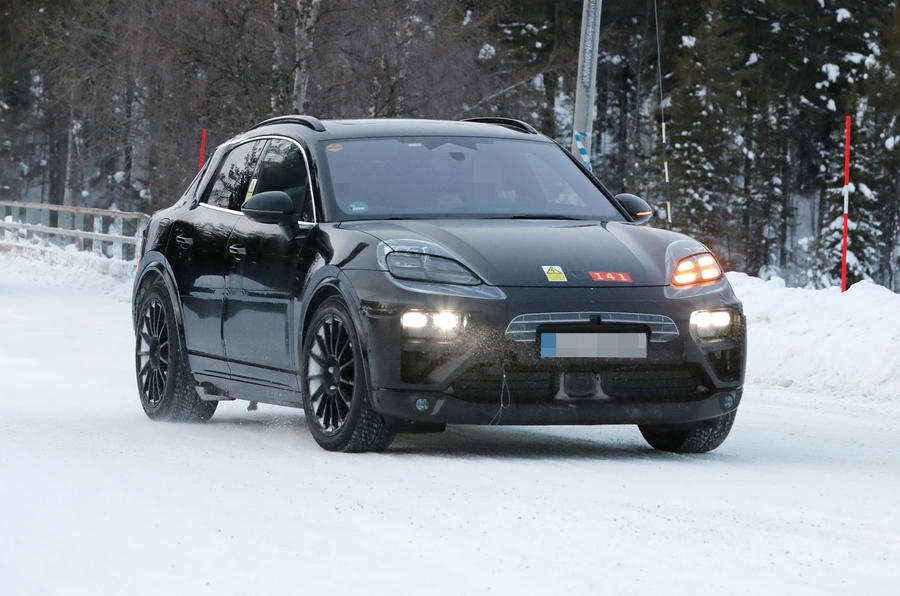
Renault Mégane E-Tech Electric
Due: September
The new Renault Megane is an entirely different machine from the old coupe: it’s now a very stylish-looking crossover, built using the same platform as the Nissan Ariya. We’ve already driven it, and our first impressions were that it’s good to drive, efficient and comfortable - making it a highly credible rival to the likes of the Volkswagen ID 4. It will be offered with two power outputs and with batteries offering a claimed range of either 186 or 292 miles. Read our review of the Megane E-Tech electric here.
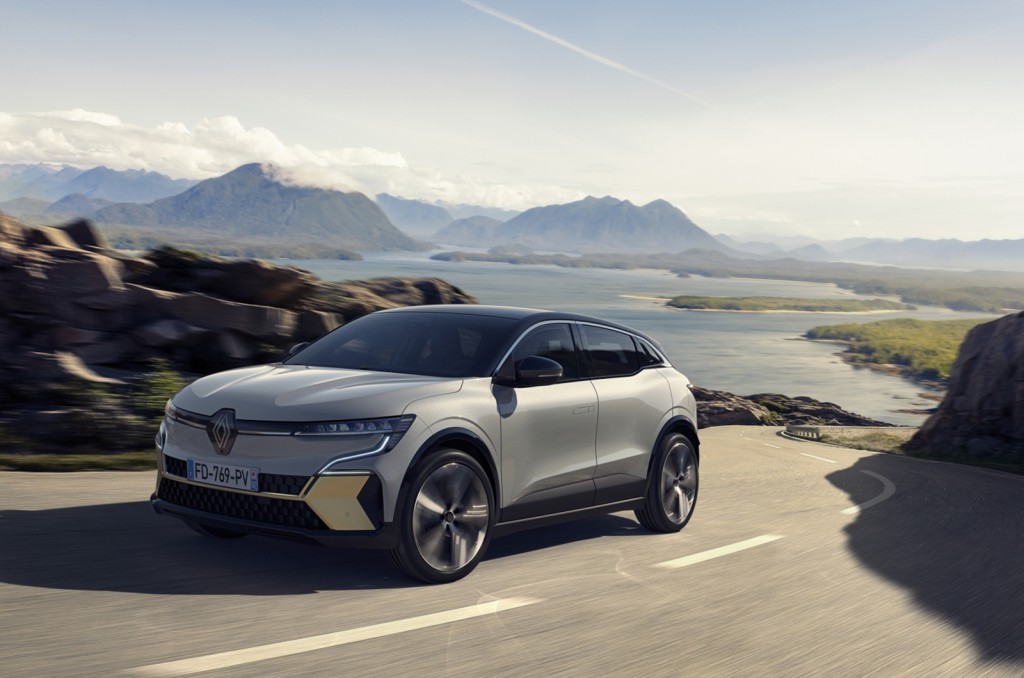
Renault 5 and 4ever
Due: 2024
The successor to the much-loved Renault Zoe EV will take inspiration from an even older hatch form the firm’s past. The retro-styled Renault 5 is part of a push to add a dash of style and desirability to the firm’s range, and it will eventually be designed by a boxier, more practical 4ever model built on the same platform.
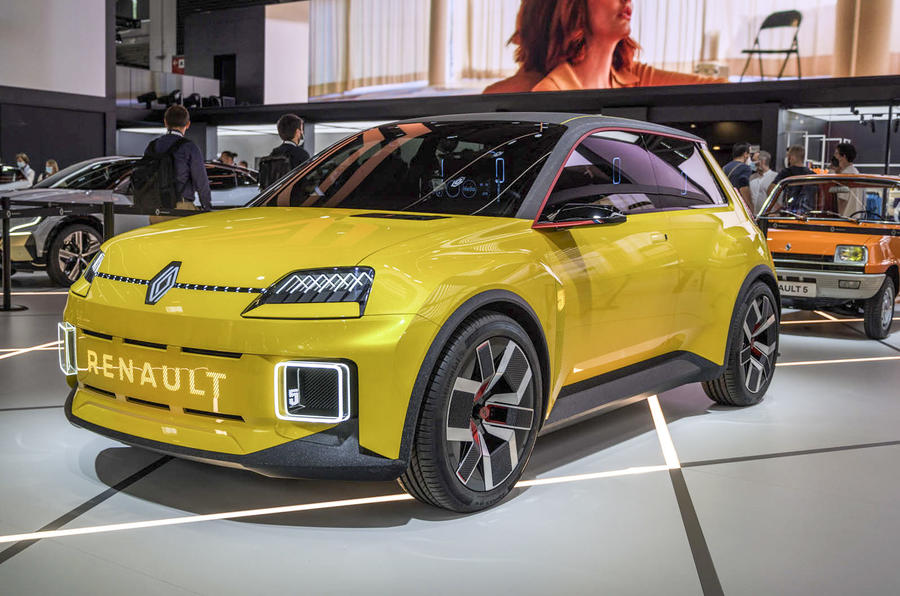
Rolls-Royce Spectre
Due: 2023
The first electric, the Rolls-Royce Spectre will occupy a similar market segment to the old Wraith. It will also use the British firm’s grandly titles Architecture of Luxury platform, with a dual-motor powertrain to offer plenty of wafting pace and poise. Rolls-Royce models are now for offering ultra-quiet and efficient cruising, and an electric model should only improve that.
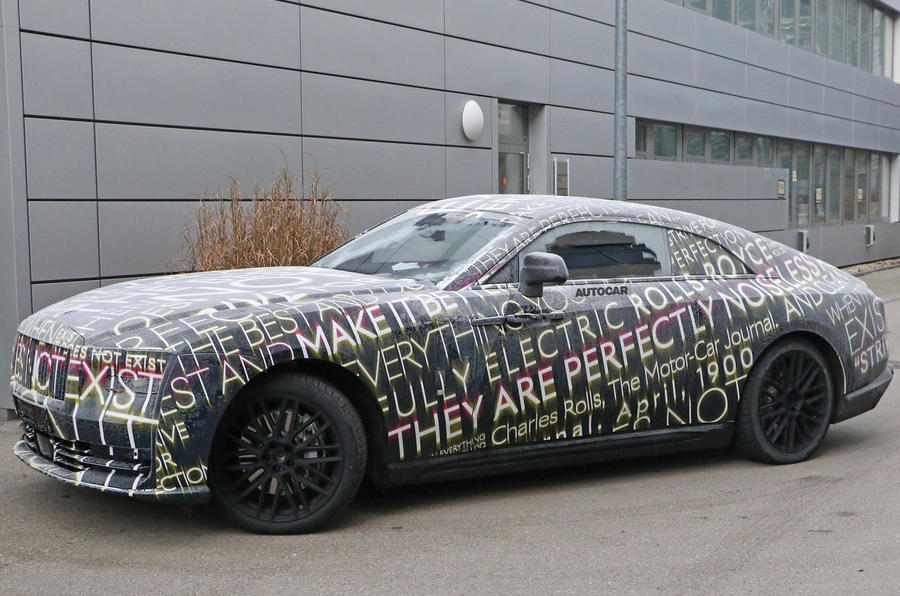
Skoda Enyaq iV Coupé and Enyaq iV Coupe vRS
Due: June
Effectively, the Skoda Enyaq iV Coupé is just an Enyaq iV with a sloping roof: but that new roof gives the machine a remarkably sleeker stance that should win over the few remaining holdouts who believe that Skoda models are dull and practical. It will only be offered with the larger 77kWh battery, and will launch with the vRS performance model. That will be the most expensive Skoda ever made, but should also be a formidable contender to the growing ranks of electric performance cars.
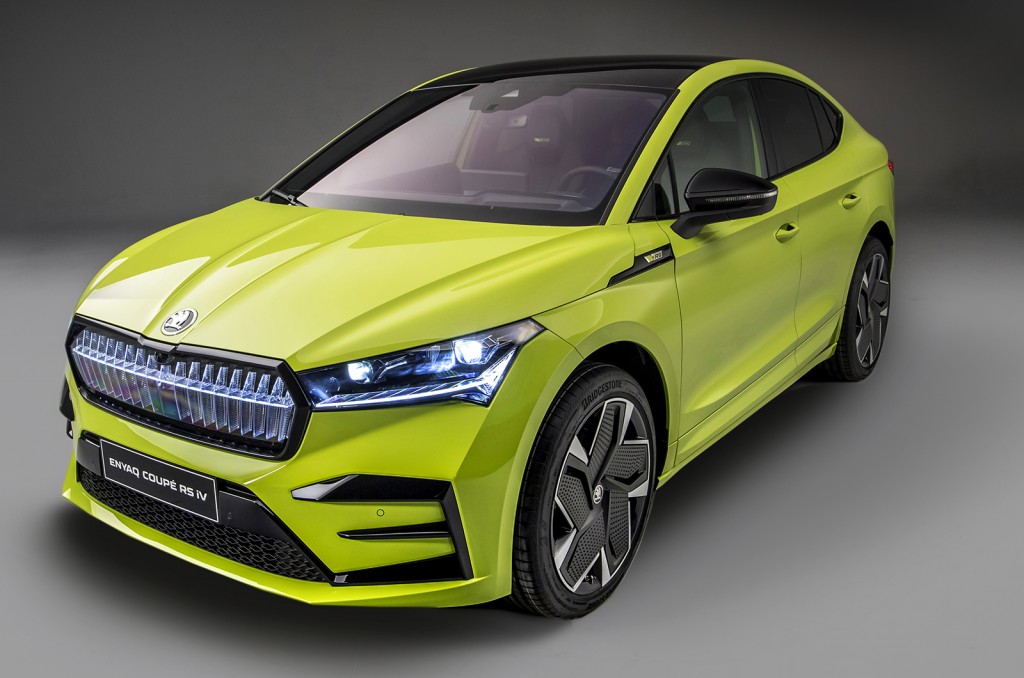
Skoda Enyaq vRS
Due: December
If you want a performance Skoda featuring the vRS badge but maximum practically, then good news: the Czech firm is also launching a performance version of the Enyaq SUV. Closely related to the Volkswagen ID 4 GTX, expect a 0-62mph time of just over 6.0s seconds, while retaining a truly massive boot.
Smart #1
Due: 2023
Best known for the cute Fortwo, Smart has been reinvented into a Chinese-based electric-only brand and is now run as a joint venture between Mercedes-Benz and Geely. The first model from the new Smart will be an SUV called the #1 (we imagine it’s trending on Twitter already), and will use Geely’s advanced SEA platform.

Ssangyong Korando E-Motion
Due: December
Ssangyong is known for a range of rugged-but-affordable off-roaders, and the Korando E-Motion will be no different. In fact, it’s very much based on the existing Korando. We don’t know the full specs yet, but at the right price it should rival the MG ZS EV.
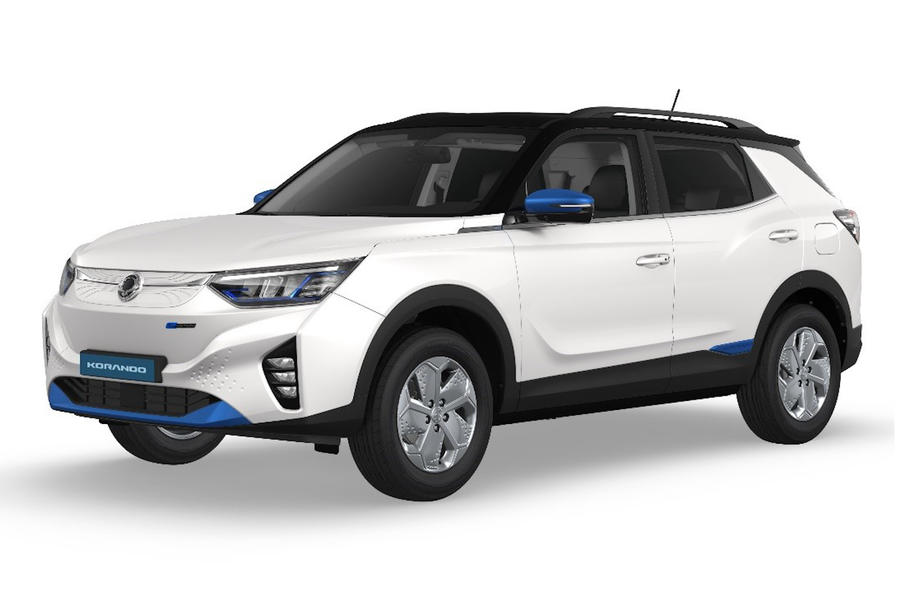
Tesla Roadster
Due: 2023
The original Tesla Roadster, which featured a Lotus-developed chassis based on the Elise, helped showcase the firm's incredible EV tech – and a successor has been long-anticipated since production stopped in 2012. It's been delayed a few times, but could be worth the wait given the promised 0-62mph time of 1.9secs and claimed 620-mile range from the 200kWh battery.
Toyota bZ4X
Due: July
Toyota’s long-awaited first bespoke EV is similarly priced to the Nissan Ariya, starting from £41,950 in the UK. Toyota has heaps of experience developing top-class crossovers, but has a lot to prove with its first bespoke electric car. Still, Toyota has more than 20 years experience of hybrid motors, so electric power is nothing new for it. The bZ4X will launch with a single motor, 201bhp model, and a twin-motor, four-wheel drive range-topper offering 248bhp and a sub 8.0sec 0-62mph time. Read our review here.
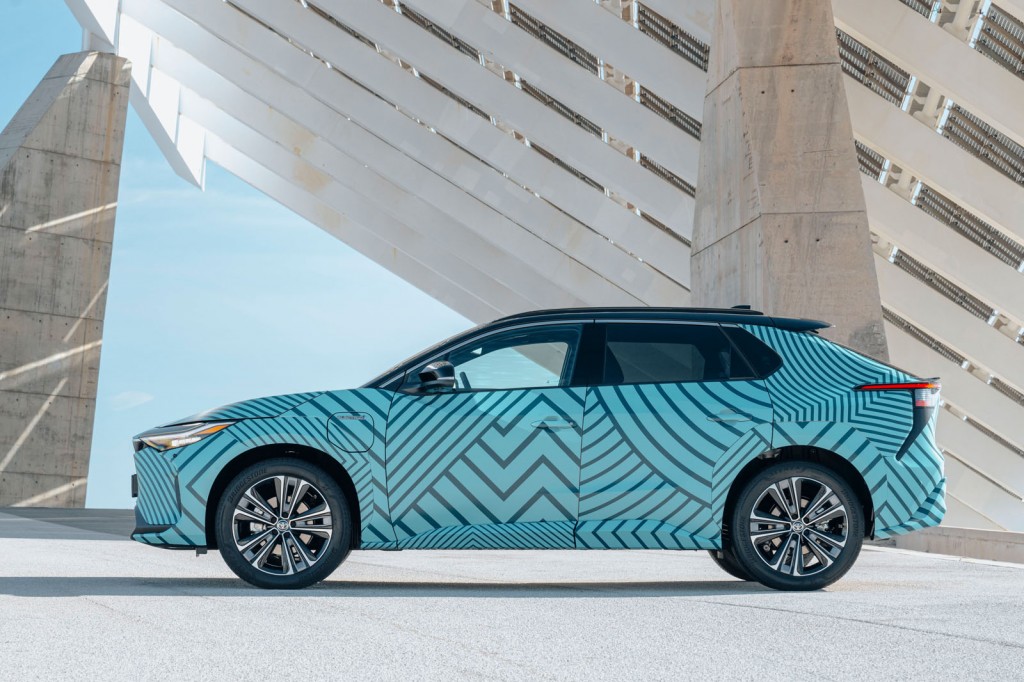
Vauxhall Astra-e
Due: 2023
The next-generation of Vauxhall’s ever-popular Ford Focus will arrive in the UK this year, but the full electric version won’t arrive until 2023. It uses the same platform as the Peugeot e-308 also due around the same time, and given Vauxhall has enjoyed success with the Corsa-e this could be a real hit.
Vauxhall Manta
Due: 2025
This is a bit of a nameplate oddity: the original Opel Manta coupe was a rare model sold in the UK with an Opel badge, before later versions were badged as the Vauxhall Sports Tourer in deference to sister firm. But there has never been a Vauxhall Manta... but it's coming. This Manta will be a very different beast though: it's being reinvented as an electric coupe-SUV. The next-gen Crossland and Insignia are also going electric.
Volkswagen ID 5
Due: March
The ID 5 is essentially a coupe version of the ID 4, and retains most of the SUV’s mechanicals. It will be priced from £47,000 with a choice of 172bhp and 201bhp electric motors. The 77kWh battery provides up to 323 miles of range. A hot GTX model looks likely to offer 295bhp and a 0-62mph sprint of 6.3secs.
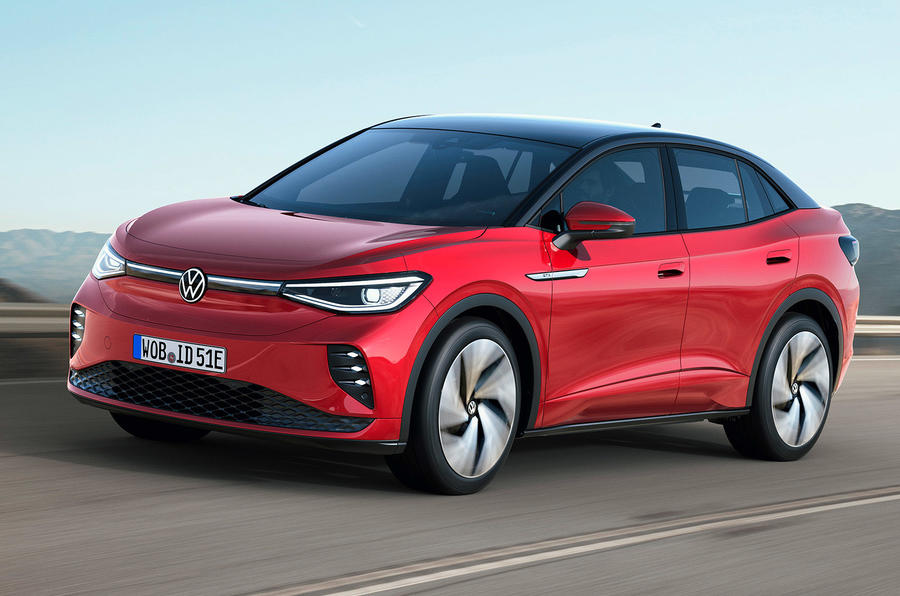
Volkswagen ID Buzz
Due: July
The Volkswagen bus (also known as the T2, camper van, Bulli and about 37,428 other names) returns – but reinvented for a new era. The retro styling of the ID Buzz might be a nod to the past, but the machine itself is a ground-up electric vehicle. There’ll be people carrier and commercial van versions, and VW plans to eventually offer one ready for autonomous driving. Read our prototype review here.
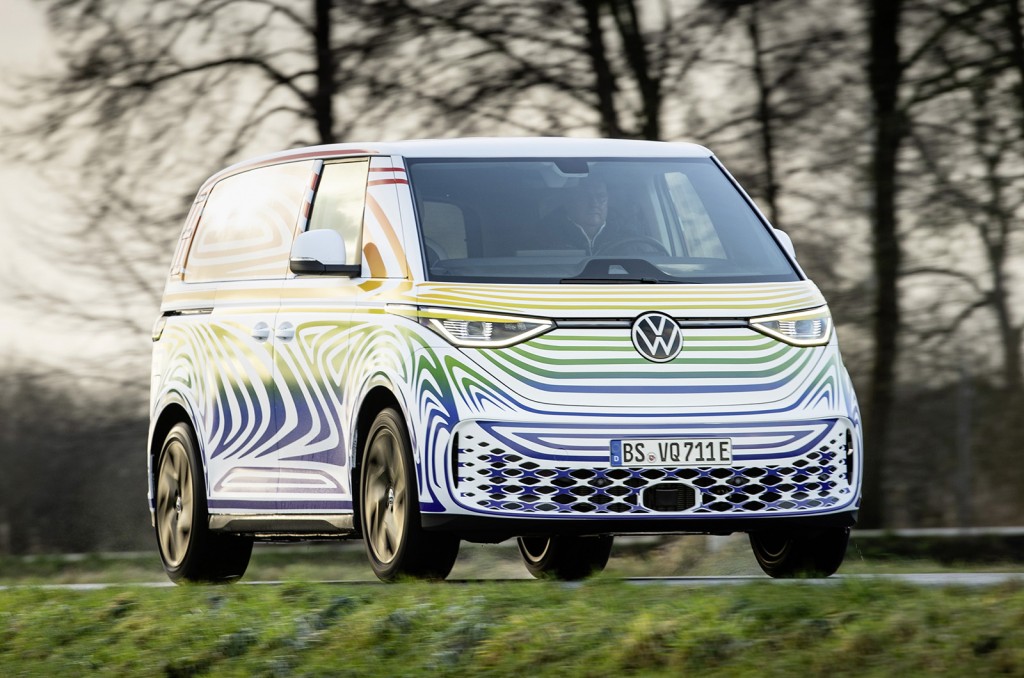
Volkswagen ID California
Due: after 2025
The retro-styled ID Buzz will also be used as the basis for a fully electric camper van, carrying the California model name used for its in-house Caravelle sleeper conversion. Expect practical features, fold-out beds, a pop-up roof for extra space and the ability to use the big battery to power your camping trip. You’ll have to wait though: it’s not due until ‘the second half of the decade.’
Volkswagen Aero-B
Due: 2023
Aero-B is the internal codename for Volkswagen’s Tesla Model 3-rivalling electric saloon. It’s been shown in concept for as the ID Vizzion, but the ‘Aero B’ name is used because of the car’s focus on aerodynamic efficiency. It will use the largest version of the VW Group’s versatile MEB platform, and feature a 77kWh battery offering up to 431 miles of range.
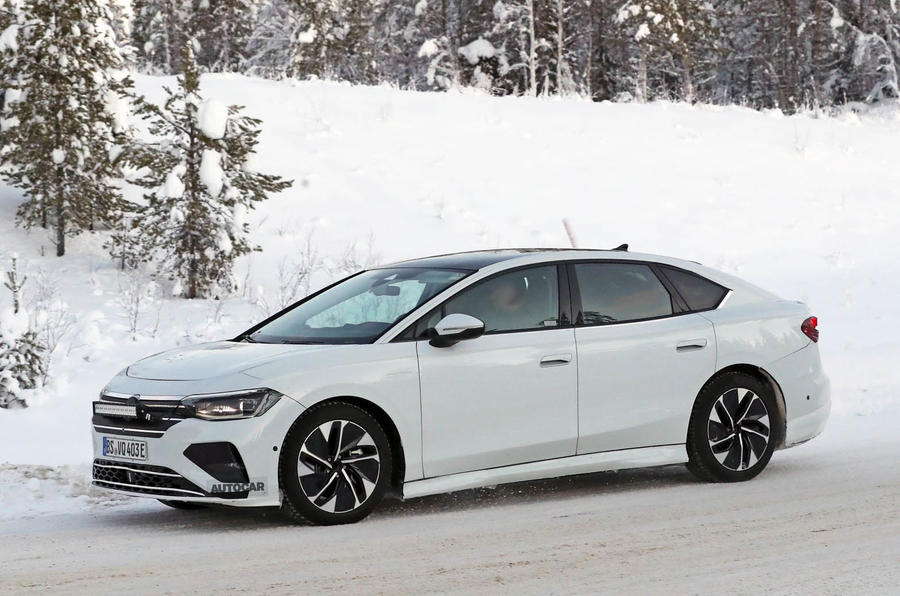
Volkswagen ID Life / ID 2
Due: 2025
This machine should be the realisation of Volkswagen’s long-held ambition to make an electric ‘people’s car’: an affordable, sub-£17,000 machine that will help to further drive uptake. It’s been previewed as the stylish, city-focused ID Life, and will use a special entry-level version of the versatile MEB platform.
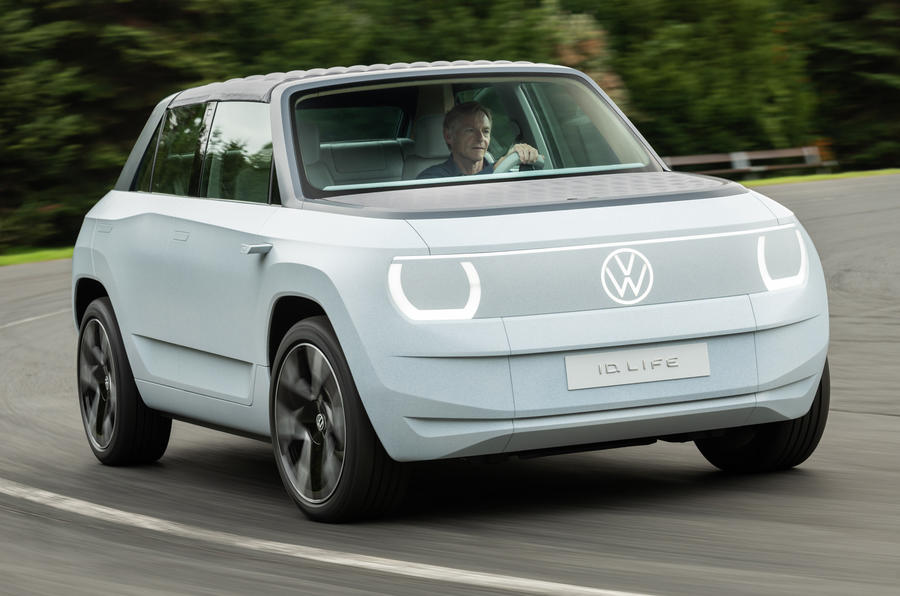
Volvo C40 Recharge
Due: March
Volvo’s first electric-only model, the C40 Recharge is basically identical to the XC40 Recharge apart from its sloping, coupé-style roofline. So it gets a 78kWh battery offering 260 miles of range and the ability to sprint from 0-62mph faster than anyone really needs a Volvo to. UK prices start from £57,000.
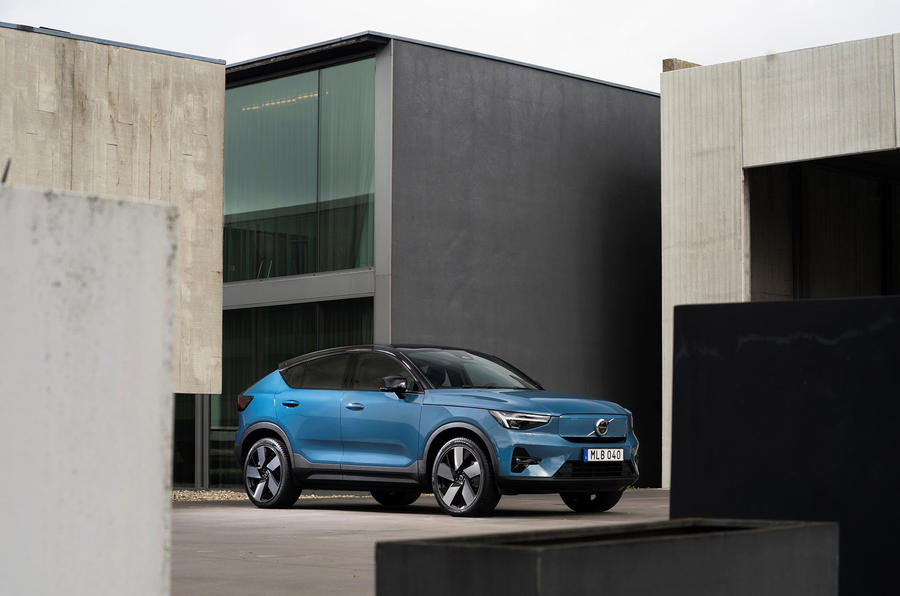
Volvo new large SUV (XC90 successor)
Due: December
Volvo’s next electric car will be a sister model to the Polestar 3 and will effectively be a successor to the XC90 large SUV. But it won’t be called the XC90: because this is such a significant model for the firm, Volvo has elected to give it a proper name, “like a child”. It will use an advanced new platform developed by Volvo and parent firm Geely, and will be one of the first mass market cars to be fitted with advanced LiDar sensors for safety.
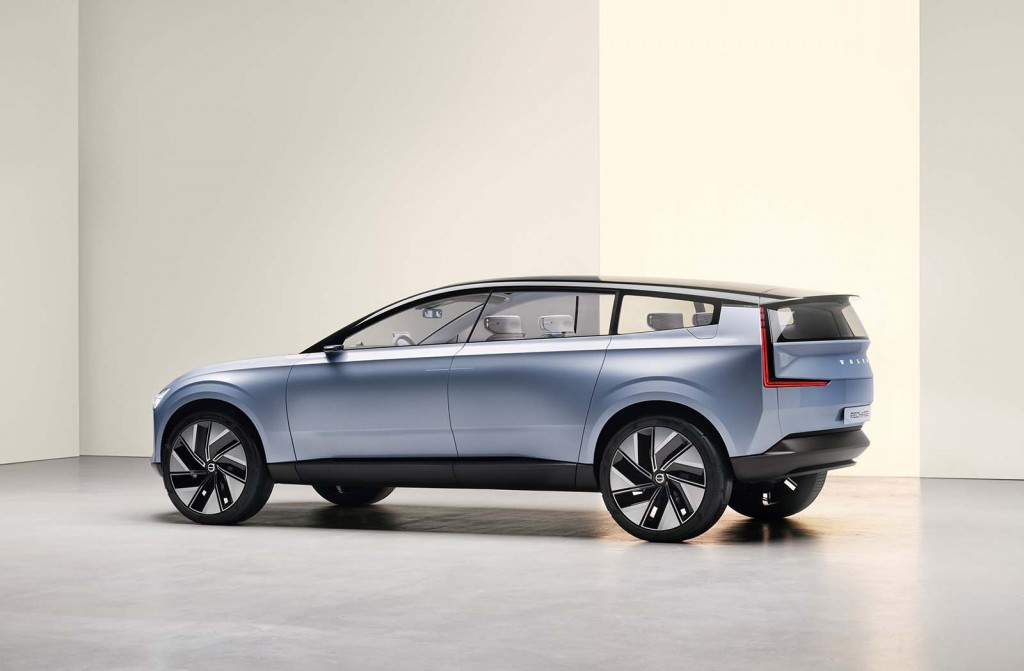
READ MORE
e-CARS
The 10 electric cars with the longest range
e-BIKES
Desiknio Pinion C1.9 Classic e-bike review
Ride for a worthy cause: Big Issue eBikes launches in Bristol
e-MOTORBIKES
Triumph reveals first electric TE-1 motorbike
BMW CE 04 electric scooter review
e-SCOOTERS
Superpedestrian Link e-scooter: first ride
The new battery tech designed to make e-scooters more sustainable
e-WORLD
New Candela C-8 electric hydrofoil has first 'flight'
Awake Ravik S 22 aims to take electric surfboards to the extreme

